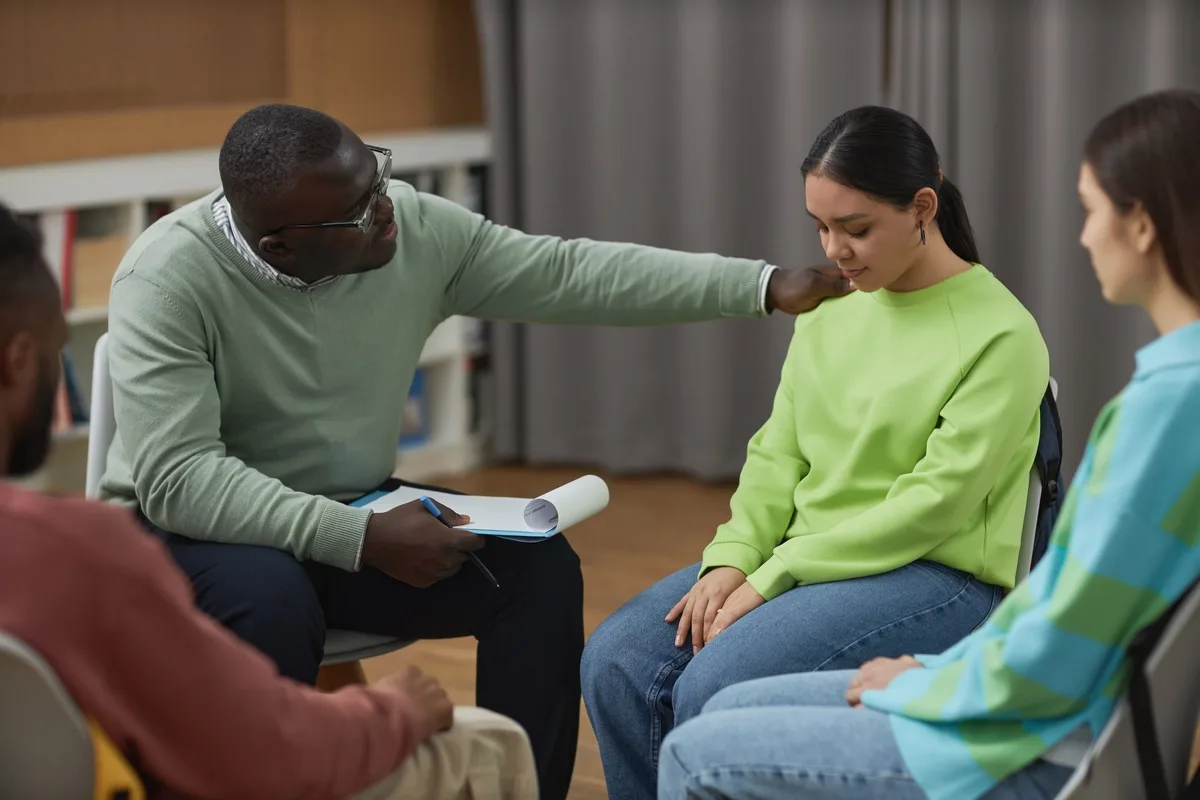24/7 Helpline:
(866) 899-221924/7 Helpline:
(866) 899-2219
Learn more about PTSD Treatment centers in San Rafael
PTSD Treatment in Other Cities

Other Insurance Options

ComPsych

Magellan Health

Horizon Healthcare Service

UMR

CareSource

Private insurance

EmblemHealth

Group Health Incorporated

Absolute Total Care

Amerigroup

Health Net

Health Choice

United Health Care

Molina Healthcare

Highmark

Sliding scale payment assistance

State Farm

UnitedHealth Group

MVP Healthcare

CareFirst

Marin Treatment Center
Marin Treatment Center offers outpatient and intensive outpatient treatment for individuals with alc...

Kaiser Permanente – Chemical Dependency
Kaiser Permanente – Chemical Dependency is a private rehab located in San Rafael, California. Kaiser...

Marin County Mental Health and Family Services
Marin County Mental Health and Family Services is a public rehab located in San Rafael, California. ...

Bay Area Community Services – Marin Counseling Clinic
Bay Area Community Services - Marin Counseling Clinic provides psychotherapy services for those indi...

Bayside Marin Treatment Center
Bayside Marin Treatment Center is a premier addiction treatment provider for adults, located in San ...

Paradigm Treatment – Teen & Young Adult Mental Health
Paradigm Treatment provides residential & telecare treatment for teens 12-17 and young adults 18-26 ...

Heartwood House Detox
Heartwood House Detox is a private rehab located in San Rafael, California. Heartwood House Detox sp...










Marin Drug Recovery
Marin Drug Recovery offers outpatient treatment for individuals with alcohol and/or substance addict...

Marin Outpatient and Recovery Services
Marin Outpatient and Recovery Services is a private rehab located in San Rafael, California. Marin O...

AA – Alcoholics Anonymous – Mission San Rafael Arcangel
AA – Alcoholics Anonymous – Mission San Rafael Arcangel is a non-profit rehab located in San Rafael,...

North Bay Recovery Center
North Bay Recovery Center is a private rehab located in San Rafael, California. North Bay Recovery C...

Marin Services for Men
Marin Services for Men is a private rehab located in San Rafael, California. Marin Services for Men ...

Marin County Mental Health Services – Outpatient
Marin County Mental Health Services – Outpatient is a public rehab located in San Rafael, California...

Paradigm San Francisco
Paradigm San Francisco is a residential treatment specialized in adolescents who are struggling with...

Helen Vine Detox Center
Helen Vine Detox Center is a private rehab located in San Rafael, California. Helen Vine Detox Cente...

Buckelew Programs
Buckelew Programs offers outpatient services for individuals with alcohol and/or substance addiction...









